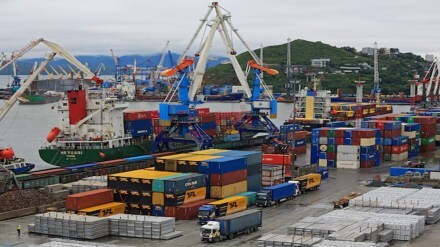By Atanu Biswas
US President-elect Donald Trump threatened to sign an executive order immediately after taking office on January 20, imposing a sweeping 25% tariff on all goods from Mexico and Canada, as well as an additional 10% tariff on Chinese imports, until the Chinese government stops smuggling synthetic opioid fentanyl. This indicated that the Trump administration will aim at continuing to use tariffs as leverage for trade negotiations and to bring manufacturing jobs back to the country.
Indeed, the US has progressively backed off from its post-World War II position of pushing global free trade and lower tariffs, primarily in response to the loss of US manufacturing jobs, which is commonly linked to unrestricted trade and an increasingly assertive China. For instance, in March 2002, President George W Bush imposed tariffs on a large number of steel imports. But Bush’s chief of staff from 2001 to 2006, Andrew H “Andy” Card Jr, said, “The results were not what we anticipated in terms of its impact on the economy or jobs.” It backfired because America’s trading partners, particularly the European Union (EU), threatened to impose tariffs in retaliation on Carolina textiles and fabrics and Florida oranges. Additionally, a study conducted by the consulting firm Trade Partnership found that Bush’s steel tariffs resulted in the loss of 200,000 American jobs. In fact, Bush initially planned to maintain the tariffs for three years, but he had to end them in December 2003.
Since President Trump started imposing tariffs and other trade restrictions on China in January 2018, there has been an economic war between the US and China. Subsequently, in addition to maintaining the tariffs, the Joe Biden administration imposed new taxes on Chinese products, including solar panels and electric cars.
“Tariff” is “the most beautiful word in the dictionary”, as Trump has stated. Trade experts predict a “new era of protectionism” as a result of Trump’s tariff threat with targeted countries. These countries may impose their own tariffs too. For instance, the Mexican President suggested that Mexico could impose its own tariffs in retaliation. “No one will win a trade war,” warned a spokesperson for the Chinese embassy in Washington. Remember that the EU targeted US products such as Kentucky Bourbon, Levi’s denim, and Harley-Davidson motorcycles during the Trump 1.0 administration. Similarly, in an effort to harm Trump’s supporters in the farm country, China retaliated by imposing tariffs on American exports, such as pork and soya beans.
Most economists are sceptical because they believe that tariffs are a largely ineffective means of government revenue collection. The tariffs may significantly increase the cost of everything in the US, including cars, gasoline, and agricultural items. Indeed, many experts question how America could compete with China if, for instance, the prices of Alberta oil, Saskatchewan uranium, Ontario automobiles, and Quebec aluminium were unreasonably high. Additionally, tens of millions of American jobs are supported by the more than one-third of goods and services that the US imports and exports from Mexico, Canada, and China combined.
The conditions of the United States-Mexico-Canada Agreement, a North American trade pact that Trump himself signed in 2020, would also be broken if such tariffs are imposed on Canada and Mexico. Furthermore, even Trump’s supporters dislike tariffs. According to a Harris poll for the Guardian, 69% of respondents think prices would increase.
What about Trump’s tariffs during his first term? William C Freund, a retired chief economist of the New York Stock Exchange, wrote a letter to the editor of The New York Times in December 2017 that “by adhering to the false notion of trade as a zero-sum deal, Mr. Trump becomes a job killer rather than a job creator”. According to a study conducted by economists from the Massachusetts Institute of Technology, the University of Zurich, Harvard, and the World Bank, Trump’s tariffs didn’t succeed in bringing employment back to the American heartland. Although in November 2018, Trump claimed that the tariffs benefitted the US, “almost all economists say the president is wrong”, the Associated Press said. Tariffs “can cause higher prices, reduce trade among countries, and hurt overall economic growth as a result”, it wrote further.
What about India? Of course, in his second term, Trump’s initial tariff plans don’t include India. But that will probably happen shortly. Remember that during his first term, President Trump was incensed over India’s high tariffs on America’s Harley Davidson motorcycles? India, the largest beneficiary of the Generalised System of Preferences programme, lost duty-free access in 2019. Additionally, Trump called India a “very big [trade] abuser” during his campaign for a second term in office.
Interestingly, tariffs are used to exert pressure on other countries on matters that may or may not be connected to trade. Scott Bessent, Trump’s pick for treasury secretary, has previously implied that the President-elect’s threats of significant tariff increases were a component of his negotiation approach. It’s escalated to de-escalate, said Bessent. For instance, Trump promised to close the border completely and slap taxes on all Mexican goods in 2019 unless Mexico stopped illegal immigration. Trump even believes that tariffs can stop wars.
Trump is a businessman. In his second term, he has control of both houses of Congress, a receptive Supreme Court, a media landscape that supports his lies, and no worries about losing another election because he will not be allowed to run again. So, he may launch a full-scale trade war, which may increase the volatility of an already uncertain world. Policymakers worldwide will find it more difficult to strike a balance between their national interests and the necessity of international cooperation as a result of Trump’s mistrust of win-win agreements.
The writer is professor of statistics, Indian Statistical Institute, Kolkata.
Disclaimer: Views expressed are personal and do not reflect the official position or policy of FinancialExpress.com. Reproducing this content without permission is prohibited.
